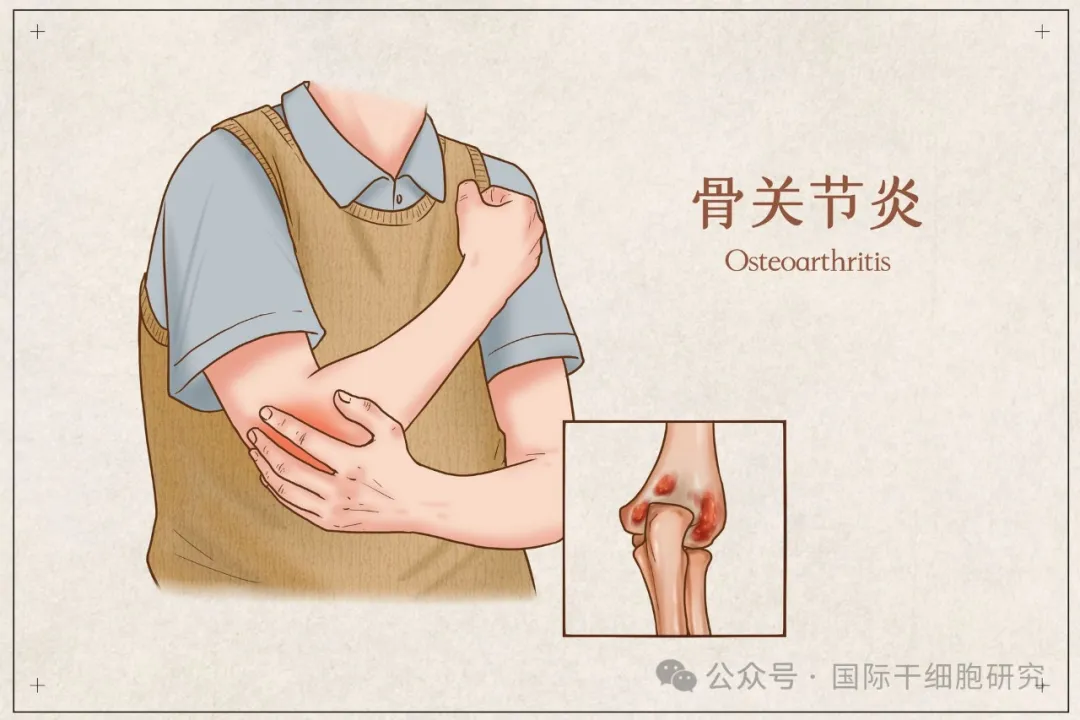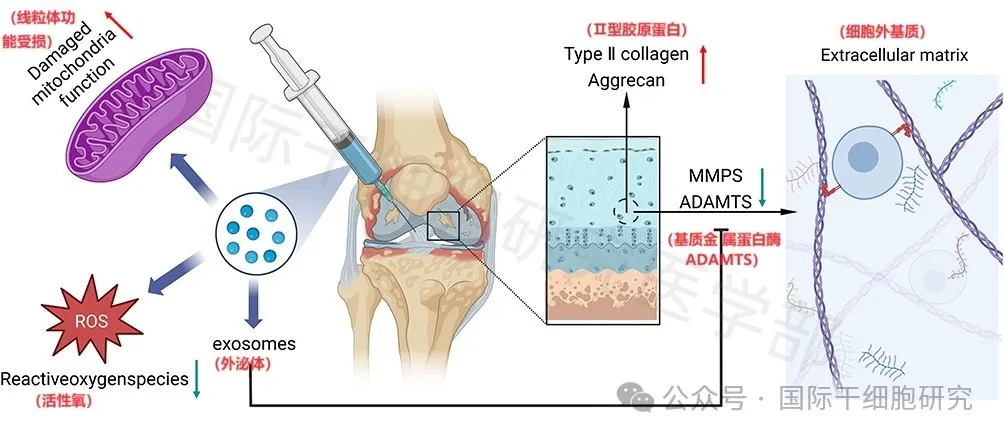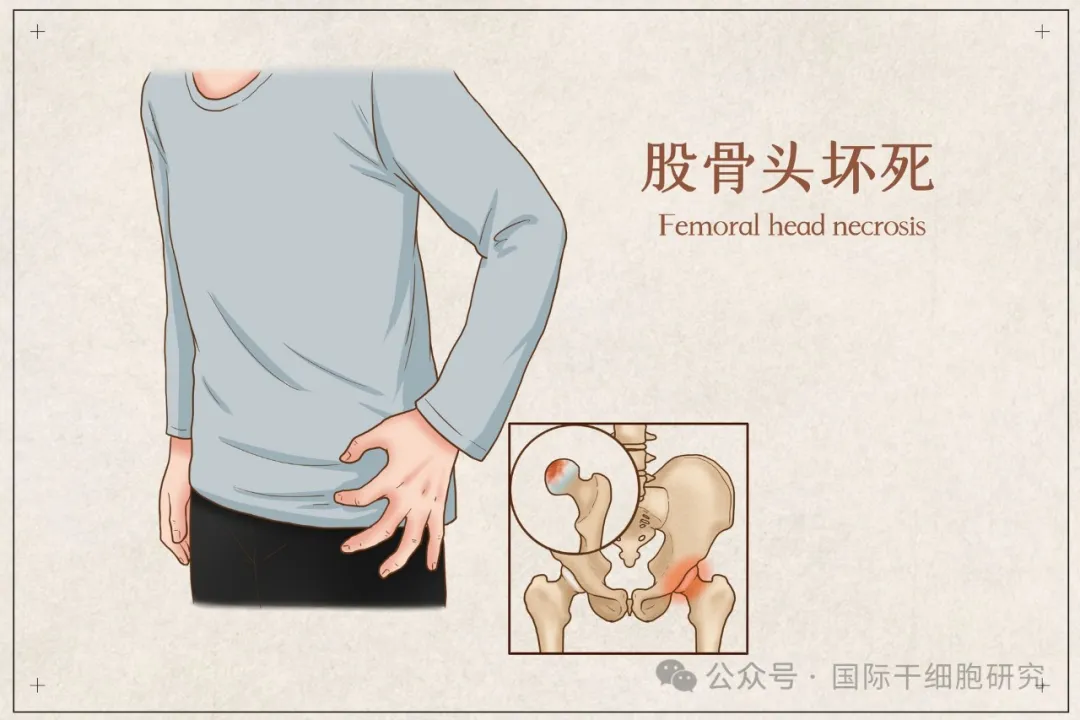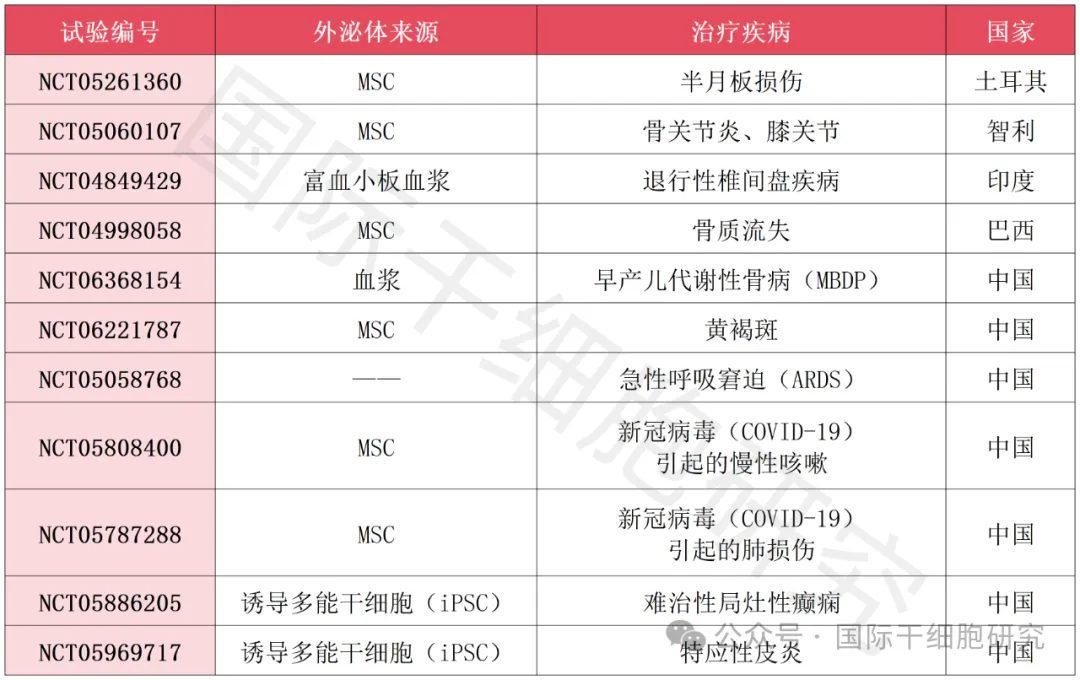
On March 28, 2024, the well-known academic journal "Adv Healtc Mater" published a "New Method for the Treatment of Osteoarthritis by Stem Cell Exosomes-CAP-exoASO" developed by Associate Professor Wang Shizhi of the School of Public Health of Southeast University. Related reports.
Studies have shown that CAP-exoASOs can achieve satisfactory results in the treatment of osteoarthritis and have huge development potential! The publication of this research and development result instantly triggered discussions about stem cell exosomes. In fact, in addition to osteoarthritis, exosomes are also "making great efforts" in treating other bone and joint diseases such as disc degeneration, tendon tears, and osteoporosis, bringing new hope and choices to patients with bone diseases who suffer from pain and disease!
CAP-exoASO: A new dawn for osteoarthritis patients!
The new method studied by the Southeast University team uses the transpeptidase SortaseA to connect small extracellular vesicles (exos) with chondrocyte affinity peptides (CAP), and then constructs and obtains chondrocyte-targeted drug delivery exo (CAP-exoASO). Compared with traditional exosomes without CAP (ExoASO), CAP-exoASO has the following advantages in treating bones and joints:
1. It can reduce the injury of chondrocytes induced by IL-1β. By reducing the expression of MMP13 (matrix metalloproteinase 13) and upregulating the expression of COL2A1, it can lead to the reorganization of cartilage matrix and reduce the progression of osteoarthritis.
2. Inflammation can be reduced by inhibiting the signaling pathways of TNF and IL-17.
3. It can prolong the retention time of ASO-MMP13 in the joint. After intra-articular injection of CAP-exoASO, the drug can reach the lesion site directly without being distributed in major organs.
In summary, CAP-exoASOs have successfully completed cartilage repair based on targeted delivery effects. They have broad application prospects in the treatment of osteoarthritis and have a promising future!
What are stem cell exosomes? Its role is related to "past and present"
Stem cell-derived exosomes (SC-Exo) are nanoscale (less than 150nm in diameter), spherical extracellular vesicles (EVs) secreted by stem cells. Carrying a variety of macromolecules such as lipids, proteins, carbohydrates, and nucleic acids, plays an important role in cell communication and coordinates the transfer of functional proteins, metabolites and nucleic acids to recipient cells.
Exosomes were first observed in plasma by Dr. Wolf half a century ago, and since then, studies have shown that vesicles are present in all biological fluids examined, and cell lines cultured in vitro have shown varying degrees of vesicle release. In 1987, Dr. Rose Johnstone officially named it "exosomes".
Exosomes not only inherit similar therapeutic effects to stem cells, such as immune responses, tissue repair, etc. At the same time, they also have their own unique advantages. On the one hand, their low immunogenicity makes them more attractive as therapeutic carriers; on the other hand, their small size and membrane components allow them to cross major biological barriers (such as the blood-brain barrier). Therefore, exosomes can be designed as therapeutic agents for the treatment of various chronic diseases such as bone and joint diseases, cardiovascular diseases, neurodegenerative diseases, and diabetes.
Origin and classification of exosomes
Exosomes are present in all body fluids, such as blood, plasma, saliva, amniotic fluid, urine, etc. According to different classification methods, exosomes can be divided into the following types:
-Part 1-Classified by whether it has been manually modified
Exosomes can be divided into two categories according to whether they have been artificially modified, namely natural exosomes and engineered exosomes.
-PART 2-Classification by parental cell type
Almost all types of human cells can produce exosomes, including but not limited to macrophages, dendritic cells (DC), stem cells, platelets, etc., and their classification is different and their specific effects are also different.
1. Macrophage-derived exosomes: It has certain effects in treating inflammatory bowel disease, skin wounds, fungal and viral infections.
2. Dendritic cell (DC)-derived exosomes (Dex): They can interact with immune cells (such as NK cells, B cells, T cells) through their surface proteins [such as major histocompatibility complex (MHC)].
3. Stem cell-derived exosomes: They have broad application potential in beauty and anti-aging, prevention and treatment of chronic diseases (such as musculoskeletal diseases, degenerative diseases, nervous system diseases, immune diseases), improvement of sub-health, etc., and are currently one of the ones with more clinical applications.
Stem cell exosomes refer to multiple bone and joint diseases
-PART 1-Treating osteoarthritis

Osteoarthritis is a degenerative joint disease caused by multiple factors such as age, inflammation, trauma, strain, etc. The disease not only affects the entire joint, but also involves bones, muscles, synovium, ligaments and periarticular fat. Its typical manifestations are articular cartilage damage, joint edge bone hyperplasia, and osteophyte formation, which seriously affects the patient's quality of life. The disease is more common in middle-aged and obese people, and with the aging of the population, changes in lifestyle and the gradual increase of the middle-aged population, the incidence of osteoarthritis is rising sharply.
At present, short-term analgesia and anti-inflammation are mainly achieved through local topical drugs and intra-articular injection of drugs (such as glucocorticoids, sodium hyaluronate, etc.). However, degradation of articular cartilage is inevitable. If it worsens, surgical procedures such as joint fusion or artificial joint replacement may be required. However, these surgeries may have side effects such as greater trauma, limited postoperative activity, and metal prosthesis-related infections.
Therefore, there is an urgent need to explore a new method to treat osteoarthritis to prevent its onset and slow the progression of the disease. In recent years, stem cell exosomes have attracted widespread attention as a potential treatment for osteoarthritis. Exosomes derived from mesenchymal stem cells (MSC) are mainly used in clinical practice. These mesenchymal stem cells may originate from various tissues such as gums, dental pulp, bone marrow, synovial membrane, and infrapatellar fat pad. Studies have found that exosomes mainly treat osteoarthritis through the following mechanisms:
1. Exosomes derived from mesenchymal stem cells (MSC) can promote chondrocyte proliferation and inhibit chondrocyte apoptosis through the lncRNA-KLF3-AS1/miR-206/GIT1 axis in OA.
2. Exosomes derived from MSC inhibit inflammatory factors, glutamine metabolic activity-related proteins, glutamine and GSH/GSSG ratio in vitro, and at the same time improve the function of chondrocytes, tissue inflammation and exercise ability, thereby helping to alleviate the progression of osteoarthritis.
3. The exosome miR-92a-3p from chondrogenic MSC can enhance cartilage formation and inhibit cartilage degradation by targeting Wnt5a.
4. The synovial MSC derived exosome miR-320c can enhance cartilage formation by targeting ADAM19.
5. Gingival MSC derived exosomes have been shown to have immunosuppressive effects and prevent collagen-induced arthritis.
Figure 1 Molecular mechanism by which exosomes promote cartilage repair

-PART 2-Muscle and tendon tear
Muscle and tendon tears can be caused by acute trauma (such as fractures) or chronic overuse (such as sports injuries). Healing of muscle strains and tendon tears includes processes such as inflammation, proliferation, and remodeling. Studies have shown that exosomes derived from mesenchymal stem cells (MSC) are beneficial to promoting the healing of muscle and tendon tears. The main reasons are as follows:
1. Exosomes can improve the myogenesis of C2C12 myoblasts in vitro and the angiogenesis of HUVEC (human umbilical vein endothelial cells), and at the same time accelerate skeletal muscle regeneration in vivo in a cardiotoxin-induced muscle injury model.
2. Exosomes can prevent muscle atrophy, inflammation and vascularization, prevent fat infiltration, and improve biomechanical properties; in addition, exosomes (especially exosomes derived from bone marrow mesenchymal stem cells) can increase the breaking load and rigidity of the rotator cuff after reconstruction, induce angiogenesis around the rotator cuff endpoints, and promote the growth of the tendon-bone interface, thereby improving chronic rotator cuff tears.
-Part 3-Fracture
Fracture healing involves the anabolic tissue expansion stage and catabolic tissue remodeling stage, which is controlled by multiple factors such as stem cells, innate and adaptive immune functions, and stability. Studies have shown that exosomes can also help promote fracture healing for the following reasons:
1. The progress of bone repair requires a variety of cells, such as inflammatory cells in the inflammation stage, endothelial and mesenchymal progenitor cells in the fibrovascular stage, osteoblasts and chondrocytes in the bone formation stage, and osteoclasts in the callus remodeling stage. Most of these cells can take up exosomes, especially osteoblasts and vascular endothelial cells, thereby contributing to fracture healing.
2. After the exosomes are absorbed, the gene expression of the recipient cells changes, which activates various signal pathways, causes various cell and tissue reactions, and ultimately facilitates fracture healing.
-PART 4-Disc (IVD) degeneration
Intervertebral disc (IVD) degeneration is the main cause of low back pain. Its molecular processes include extracellular matrix (ECM) degeneration, inflammation, oxidative stress, apoptosis, aging, decreased autophagy, etc. Studies have shown that exosomes can also help improve disc degeneration and relieve the resulting low back pain for the following reasons:
1. Intradiscal injection of stem cell exosomes can help inhibit apoptosis of nucleus pulposus cells (NPC) and reduce IVD degeneration through the exosome miR-21.
2. Exosomes can inhibit the NLRP3 inflammatory body by delivering miR-302c, thereby reducing the apoptosis of nucleus pulposus cells.
3. MSC-derived exosomes can also inhibit oxidative stress in NPC and ultimately help improve disc degeneration.
-Part 5-Osteoporosis
Osteoporosis is a metabolic bone disease characterized by low bone density and weakened bone structure, which increases the risk of fracture. It is mainly caused by bone absorption by osteoclasts and insufficient compensation by bone formation by osteoblasts. Studies have shown that exosomes can also help improve osteoporosis for the following reasons:
1. Exosomes can antagonize hypoxia/serum deprivation induced apoptosis of osteocytes and osteoclasts mediated production.
2. Inhibiting apoptosis of bone marrow mesenchymal stem cells through the miR-1263/Mob1/Hippo pathway, thereby preventing disuse osteoporosis.
3. Improve bone mineral density and reverse osteoporosis caused by estrogen deficiency through miR-2110 and miR-.
-PART 6-Femoral head necrosis

"Femoral head necrosis (ONFH)", also known as "avascular necrosis of the femoral head", can be caused by trauma (such as femoral head and neck fractures), non-traumatic factors (such as long-term use of adrenal glucocorticoids) and other factors. Among them, glucocorticoids (GC) are one of the common causes of femoral head necrosis, and its incidence may be related to impaired blood supply to the femoral head and weakened osteogenic activity. Clinical treatment of femoral head necrosis is mainly performed by surgical treatment such as total hip replacement. Drugs such as low molecular weight heparin can also be given to improve symptoms.
In recent years, studies have found that stem cell exosomes can promote angiogenesis and osteogenesis through the PI3K/Akt pathway, thereby preventing glucocorticoid-induced femoral head necrosis.
Clinical application and research of stem cell exosome therapy at home and abroad
1. Clinical trial of exosome therapy for the treatment of bone and joint diseases (as of April 2024)

2. Japan's approved stem cell exosomes project

Messages
With the continuous development of regenerative medicine, in addition to stem cells themselves, stem cell derivatives (such as stem cell exosomes, supernatants, etc.) have also attracted widespread attention and discussion. Studies have shown that exosomes derived from stem cells have shown great potential in the treatment of many diseases such as orthopedics (such as osteoarthritis), and are also regarded as an effective and multifunctional alternative to stem cell therapy in the surgical field.
Exosomes have obvious advantages, such as easier use and storage, and lower price, but their therapeutic efficacy is inferior to that of stem cells. How to expand the scale of exosomes production in the future and combine multiple models of exosome delivery to expand the clinical application of stem cell-derived exosomes in the disease spectrum will be the focus of research in various countries. In short, patients can make reasonable choices based on their own medical condition, individual circumstances, financial status, etc., after consulting professionals.